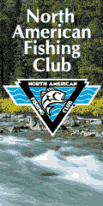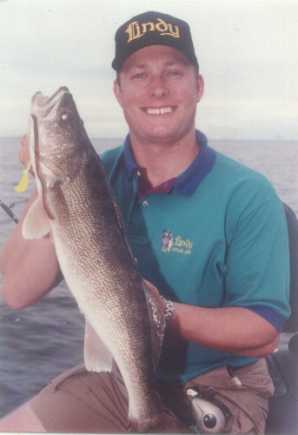
|
|

Free 90 day Risk free trial offer click here 
|

By Sam Anderson The walleye is king in the Upper Midwest when you talk to many anglers about what kind of fish they like to pursue. One fish that is closely related to the walleye is the sauger. The sauger is a "cousin" to the walleye and the meat is very similar to that of a walleye, but this camouflaged commando of the deep is different in other ways. First of all, the walleye and the sauger are similar in shape.
Both of these fish are "cigar shaped" and to the novice they are sometimes
mistaken. They both like similar "haunts" and they are often times
caught in the same general area. The saugers are usually found in
the river systems and some anglers have reported catching saugers in lakes.
But with a closer observation they discover that the lakes are part of
a river system. Saugers are also referred to as "sand pike" and many
times they are caught adjacent to sand. The walleye in comparison
can
With all these similarities in mind you should also realize that there
are differences. The physical appearance of a sauger is noticeable.
They have mottled colored sides that gives them the camouflaged pattern.
They have the ability to blend into their environment,
The sauger gets the commando reputation because of its' systems of hidding and wanting in ambush of its' prey. The sauger is also found deeper than walleyes and it usually will not achieve the weigh size that a walleye will. In fact, most state records on saugers tell the angler that a large six pound sauger will be close to their state record. These commandos like current. They live out their lives in current breaks behind rocks, man made rip rap, stumps, downed trees and below dams, bends of the river, and off the tip of sand bars. They wait and watch and when the food offering floats by they attack and retreat to the protection of the current break. How does an angler pursue these commandos of the deep? You might want to drift fish for them, which is very common on river systems or you many want to anchor above these current breaks. Anchoring is a method that helps present your bait in a natural method and it is a method that will allow you to catch more fish than trolling or casting. Lower your lure to the bottom along visible current breaks, and use your electric motor to slip dift with the current, bouncing the lure along the bottom. I prefer to add a fathead minnow to my jig head and a stinger treble hook, should short-striking fish require extra hooking capacity. If traditional jigging fails to generate action then I will switch to
an anchored position and hover over the saugers with a more direct approach.
There are a few situations when anchoring is most effective. One of my
favorite times is when the fish are working small, shallow structures like
rock humps. Let's say we have some sand flats that are about eight
feet deep. Scattered on the sand are small rock humps. These humps
will hold fish throughout the year, and we can take some
I go over the sand flat with a close eye on my When fishing crawlers and leeches in a river system sometimes the bite becomes a little slow, so drag or slip your jigs off the bottom ever so lightly. Occasionally, lift it slightly off the bottom. I have found this change will trigger some of the non-aggressive fish, however have plenty of jigs because you tend to snag more using this method. The sauger is a great replacement when you are looking for walleyes and they are scrappy fighters, so next time you are on a river system look for these commnados of the deep. Please visit these site sponsors
|
|---|---|